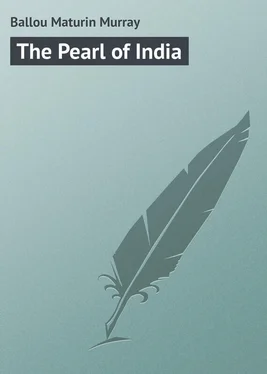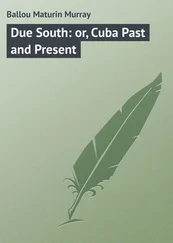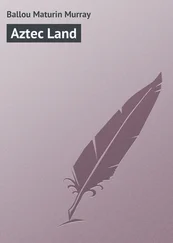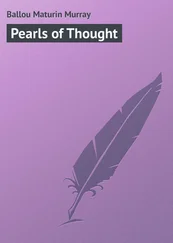Maturin Ballou - The Pearl of India
Здесь есть возможность читать онлайн «Maturin Ballou - The Pearl of India» — ознакомительный отрывок электронной книги совершенно бесплатно, а после прочтения отрывка купить полную версию. В некоторых случаях можно слушать аудио, скачать через торрент в формате fb2 и присутствует краткое содержание. Жанр: foreign_prose, Путешествия и география, на английском языке. Описание произведения, (предисловие) а так же отзывы посетителей доступны на портале библиотеки ЛибКат.
- Название:The Pearl of India
- Автор:
- Жанр:
- Год:неизвестен
- ISBN:нет данных
- Рейтинг книги:4 / 5. Голосов: 1
-
Избранное:Добавить в избранное
- Отзывы:
-
Ваша оценка:
- 80
- 1
- 2
- 3
- 4
- 5
The Pearl of India: краткое содержание, описание и аннотация
Предлагаем к чтению аннотацию, описание, краткое содержание или предисловие (зависит от того, что написал сам автор книги «The Pearl of India»). Если вы не нашли необходимую информацию о книге — напишите в комментариях, мы постараемся отыскать её.
The Pearl of India — читать онлайн ознакомительный отрывок
Ниже представлен текст книги, разбитый по страницам. Система сохранения места последней прочитанной страницы, позволяет с удобством читать онлайн бесплатно книгу «The Pearl of India», без необходимости каждый раз заново искать на чём Вы остановились. Поставьте закладку, и сможете в любой момент перейти на страницу, на которой закончили чтение.
Интервал:
Закладка:
Near the site of the Brazen Palace of Anuradhapura are several dagobas, partially hidden by rank tropical verdure. One of these peculiar structures was originally over four hundred feet in height, antedating the Christian era by many years. Does the reader realize what an amount of solid masonry such a structure represents? When we say that this dagoba was nearly twice the height of Bunker Hill Monument, and that it was three hundred and sixty feet in diameter at the base, the comparison may aid the imagination. Verily, nothing but the Egyptian pyramids compare in magnitude with these shrines of Ceylon, while no modern engineering enterprise excels in immensity the artificial lakes which were created upon her surface. One writer has gone into a careful calculation regarding the structure, and says that it contained material enough originally to build a wall ten feet high from London to Edinburgh.
These peculiarly shaped dagobas are scattered all over the island, each being the receptacle of some saintly relic. Tradition says they are thus formed to resemble a bubble floating upon the water, but they are really bell-shaped, and most of them have a low, ornamental spire. Near the summit is the secret chamber wherein is deposited the sacred treasure. Time effaces all mundane things. With the exception of the Temple of the Tooth, at Kandy, no one can say what special relic any one of these remarkable structures was originally designed to shelter.
Let us quote for the reader's edification an ancient native description of this famous city of the plain when it was in its glory. It is a literal translation from the original: —
"The magnificent city of Anuradhapura is refulgent from the numerous temples and palaces whose golden pinnacles glitter in the sky. The sides of its streets are strewed with black sand; they are spanned with arches bearing flags of gold and silver; on either side are vessels of the same precious metals, containing flowers; and in niches are statues holding lamps of great value. In the streets are multitudes of people, armed with bows and arrows; also men powerful as gods, who with their huge swords could cut asunder a tusk elephant at one blow. Elephants, horses, carts, and myriads of people are constantly passing and repassing. There are jugglers, dancers, and musicians of various nations, whose chank shells and other musical instruments are ornamented with gold. The distance from the principal gate to the opposite gate is four gaws (sixteen miles); and from the north gate to the south gate four gaws. The principal streets are Moon Street, Great King Street, and Great Sandy Street. In Chandrawakkawidiya are eleven thousand houses, many of them being two stories in height; the smaller streets are innumerable. The palace has immense ranges of buildings, some of two, others of three stories in height; and its subterranean apartments are of great extent."
Sir J. E. Tennent gathers from various ancient sources, including the veritable Mahawanso, that Anuradhapura, between four and five centuries before Christ, contained the temples of various religions, – "temples and palaces whose golden pinnacles glittered in the sky," – besides spacious public gardens and free baths, together with almshouses and hospitals, in which animals as well as human beings were tenderly cared for.
One king gave the "corn of a thousand fields" for the support of the hospitals, another set aside a certain quantity of rice to feed the squirrels which frequented the city gardens, while a third monarch displayed his skill in treating the diseases of elephants, horses, and domestic cattle. The streets were lined with grand shops and bazaars. On festive occasions, barbers and dressers were stationed at each entrance to the capital for the convenience of strangers who visited the city. Public officials vied with each other in their patriotic deeds designed for the public good.
In one corner of the widespread ruins of Anuradhapura there is now a small village, with a Christian mission and school for the native children. There are also a few bazaars, a post-office, telegraph station, and a court house, which serve, by affording a strong contrast to the former splendor which reigned here, to emphasize the historic grandeur of the defunct capital.
CHAPTER IV
Oriental Dagobas. – Ancient City of Pollonarua. – Laid out like our Modern Capitals. – Unexplored Ruins. – Elaborate Stone Carvings. – Colossal Stone Figure. – The "Buried Cities." – The Singhalese not a Progressive People. – Modern History of Ceylon. – Captured by the English. – The "Resplendent Island." – Commercial Prosperity. – Increasing Foreign Population. – Under English Rule. – Native Soldiers. – Christian Sects and Churches. – Roman Catholic Church. – Expulsion of the Jesuits.
The very interesting and in many respects unique ruins of Anuradhapura, like those pertaining to the city of Pollonarua, with its curious and enormous mass of crumbling brick-work in the shape of a dagoba surmounted by a temple, are supposed to have been thus mouldering in the dust for more than six centuries. These dagobas, doting with age, as we have shown, are relic shrines, like in purpose to the pagodas of Burmah, which they somewhat resemble. Their substantial outside finish must have given them very much the appearance of being built of pure white marble. In dimensions they are exceeded only by the pyramids of Ghizeh, but there is no genius or architectural excellence evinced in the construction of either. Judged by the light of our day, there is no legitimate reason for their existence. Religious fanaticism gave birth to one, and personal pride to the other. They neither subserve the purpose of utility nor of beauty. As monuments of personal aggrandizement, or as individual memorials, what total failures they have proved! Think for a single moment of the vast contrast between either of the Egyptian pyramids, or these bell-shaped dagobas, with their plain stuccoed coverings, and that modern shrine and tomb combined, – the Taj Mahal of Agra. The pyramids and dagobas are crude, barbaric embodiments of bulk and imposing loftiness; the other is a realization in marble of a poetic dream. The former are remarkable only for magnitude; the latter, for its exquisite grace.
There is sufficient evidence still left us to show that the olden city of Pollonarua was laid out in a perfectly systematic way, and built up in the most regular manner. Its founders evidently started with a well-perfected purpose. It was not a chance settlement of a few cabins, which gradually increased hither and thither in various directions until it assumed the proportions of a metropolis. Notwithstanding the present confusion, the general features of its topography are clearly discernible amid the mounds of mouldering material. The main street from the principal entrance-gate continued perfectly straight for four miles between royal palms to the opposite extreme of the city, crossed at right angles in the centre by a similar thoroughfare, thus forming two main streets, which terminated at four great gates of entrance and exit to and from the town, – north, east, south, and west. From these main streets radiated lateral and smaller roadways, evidently occupied by humbler dwellings, together with an occasional temple or other public building. The ruins of what is known as the Treasure House of Pollonarua are unusually interesting, as exhibiting some of the finest and best preserved bas-reliefs to be found in Ceylon, and as showing also certain marked peculiarities of skill in architecture which prevailed in pre-Christian times. On either side of the principal thoroughfares of the city were handsome and substantial dwellings, palaces, and sacred temples. The latter, with their gorgeous gilded domes, were dedicated to various pagan gods. Other spacious buildings and open areas were devoted to pleasure entertainments for the masses of the people, not unlike the modern idea of public gardens and outdoor theatres.
Читать дальшеИнтервал:
Закладка:
Похожие книги на «The Pearl of India»
Представляем Вашему вниманию похожие книги на «The Pearl of India» списком для выбора. Мы отобрали схожую по названию и смыслу литературу в надежде предоставить читателям больше вариантов отыскать новые, интересные, ещё непрочитанные произведения.
Обсуждение, отзывы о книге «The Pearl of India» и просто собственные мнения читателей. Оставьте ваши комментарии, напишите, что Вы думаете о произведении, его смысле или главных героях. Укажите что конкретно понравилось, а что нет, и почему Вы так считаете.












